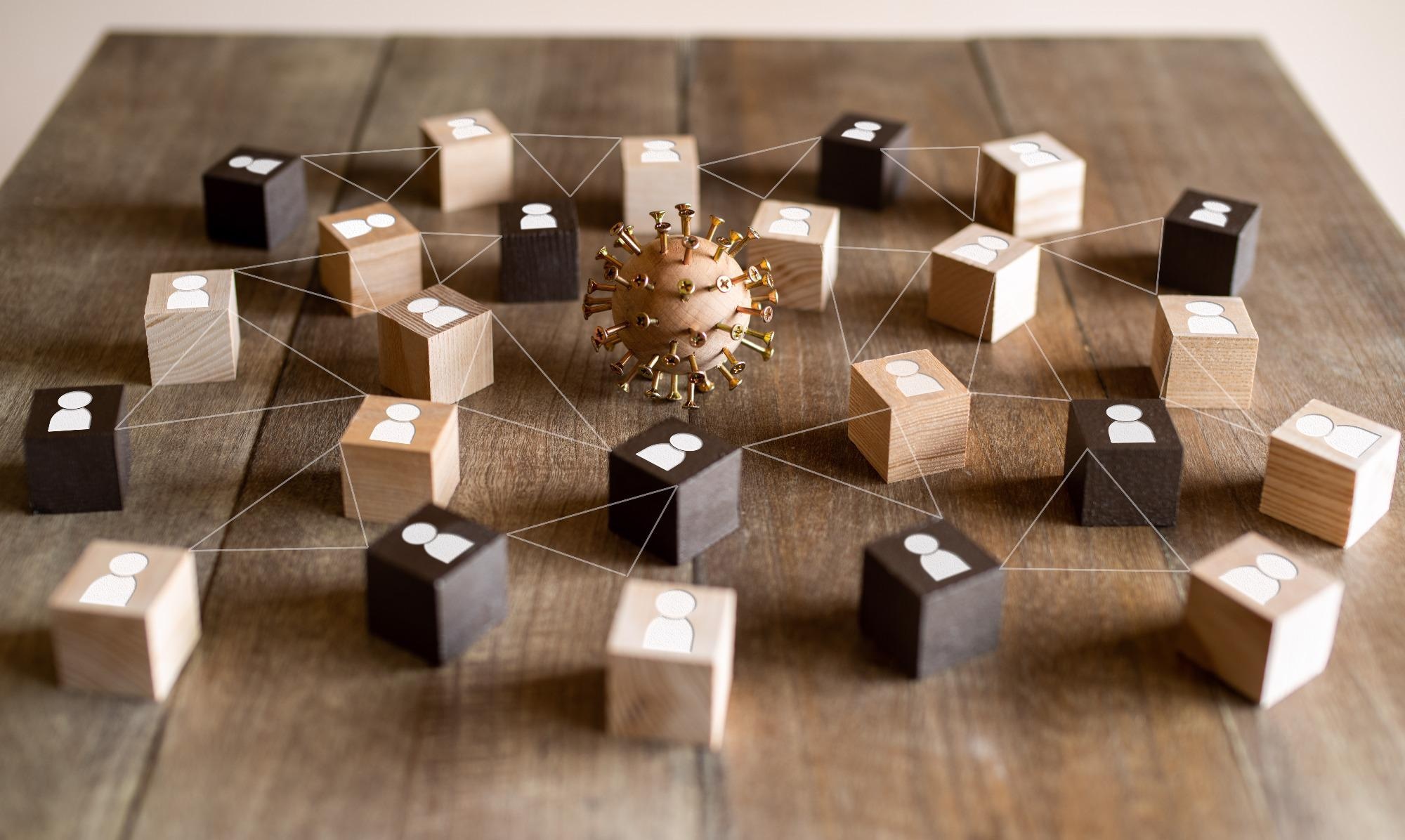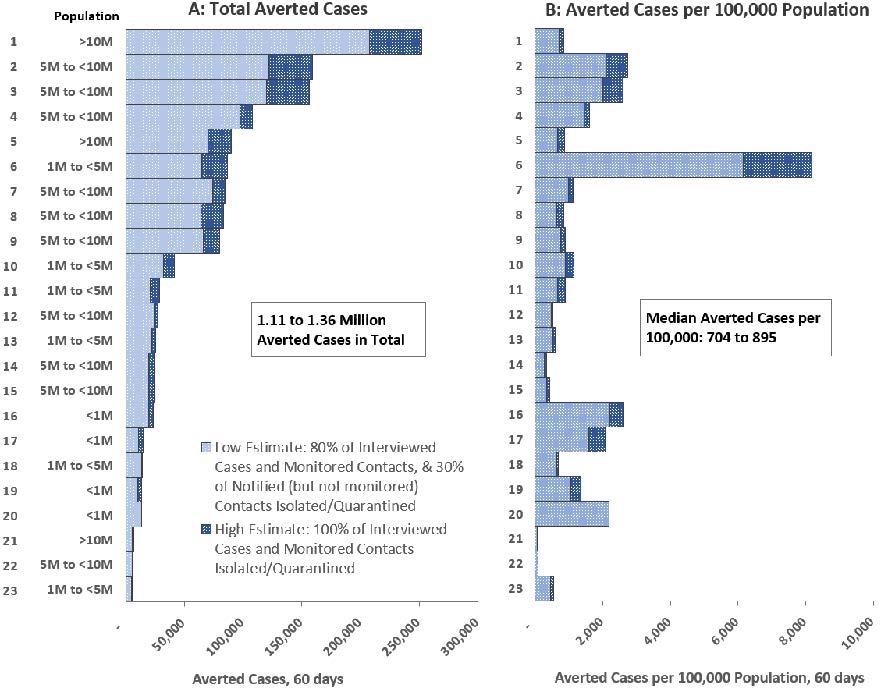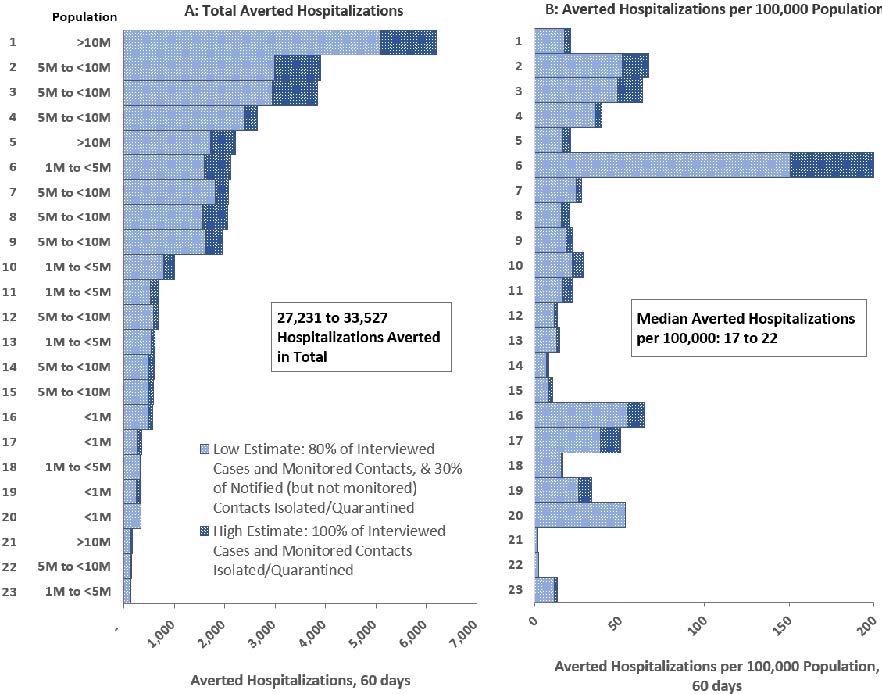Scientists from the coronavirus disease 2019 (COVID-19) response team of the Centers for Disease Control and Prevention (CDC), USA, have recently investigated the effectiveness of COVID-19 Case Investigation and Contact Tracing (CICT) programs in controlling the incidence of COVID-19 cases and hospitalizations.
Their findings reveal that the control measures taken under CICT programs can prevent a significant number of COVID-19 cases and hospitalization across several US states. The study is currently available on the medRxiv* preprint server while awaiting peer review.
 Study: COVID-19 cases and hospitalizations averted by case investigation and contact tracing in the United States. Image Credit: TETSU Snowdrop / Shutterstock
Study: COVID-19 cases and hospitalizations averted by case investigation and contact tracing in the United States. Image Credit: TETSU Snowdrop / Shutterstock

 This news article was a review of a preliminary scientific report that had not undergone peer-review at the time of publication. Since its initial publication, the scientific report has now been peer reviewed and accepted for publication in a Scientific Journal. Links to the preliminary and peer-reviewed reports are available in the Sources section at the bottom of this article. View Sources
This news article was a review of a preliminary scientific report that had not undergone peer-review at the time of publication. Since its initial publication, the scientific report has now been peer reviewed and accepted for publication in a Scientific Journal. Links to the preliminary and peer-reviewed reports are available in the Sources section at the bottom of this article. View Sources
Background
Since the beginning of the COVID-19 pandemic, several non-pharmaceutical control measures have been adopted to control the spread of severe acute respiratory syndrome coronavirus 2 (SARS-CoV-2).
Of these measures, identification of COVID-19 cases, contact tracing, and implementation of isolation and quarantine strategies for infected or exposed persons have shown a significant positive effect in reducing SARS-CoV-2 transmission.
In the US, the CICT programs are successfully working to identify and notify infected or exposed persons about the requirement of isolation and quarantine.
A study involving 14 US jurisdictions has highlighted the effectiveness of these programs in reducing viral spread. A considerable investment has been made by the US CDC to support these programs.
A national review of these efforts has indicated that about 42,000-55,000 case investigators and contact tracers have interviewed 9 million COVID-19 cases and identified and notified 10 million contacts.
In the current study, the scientists have evaluated the impact of CICT programs in preventing COVID-19 cases and related hospitalization during the peak months of the pandemic (November 2020 and January 2021).
Study design
The scientists collected COVID-19 related data (numbers of interviewed cases, notified and monitored contacts, and the interval between case identification and contact notification), from CICT programs and analyzed it using CDC’s COVID Tracer Advanced modeling tool to evaluate the impact of CICT programs.
They collected the data from 22 US states and one territory that reported all necessary information for analysis. These 23 jurisdictions accounted for 42% of the US population and all four census regions. They evaluated the impact of CICT programs based on their ability to prevent COVID-19 cases and hospitalization among cases that could not be prevented by vaccination and other non-pharmaceutical control measures.
 Estimated COVID-19 Cases Averted by Case Investigation and Contact Tracing, by Jurisdiction, November 25, 2020- January 23, 2021 (60 days)
Estimated COVID-19 Cases Averted by Case Investigation and Contact Tracing, by Jurisdiction, November 25, 2020- January 23, 2021 (60 days)
Important observations
During the study period, a total of 5,269,390 COVID-19 cases were reported across the study jurisdictions.
The analysis conducted in the study reported that CICT programs prevented 1.11 to 1.36 million cases and 27,231 to 33,527 hospitalizations during the 60-day study period. However, the lower estimates indicated lower overall compliance, meaning that only a fraction of identified cases and contacts followed the isolation and quarantine rules. Similarly, higher estimates showed higher overall compliance, suggesting all identified cases and contacts followed the rules.
 Estimated hospitalizations averted due to CICT programs from 11/25/20 – 1/23/21 (60 days)
Estimated hospitalizations averted due to CICT programs from 11/25/20 – 1/23/21 (60 days)
Considering all identified cases and contacts, it was estimated that an average of 704 and 895 cases per 100,000 persons were prevented by CICT programs in lower and higher overall compliance situations, respectively. Furthermore, considering the effect of vaccination and other non-pharmaceutical control measures, it was estimated that an average of 19% and 23% of cases were prevented by CICT programs in situations of lower and higher overall compliance, respectively.
Overall, the number of cases prevented by CICT programs was higher in jurisdictions with larger population sizes. However, in a jurisdiction with a smaller population size, these programs prevented more cases on a per-population basis. Overall, the number of cases prevented was 2-times higher than the overall average.
The highest effect of CICT programs was observed in the Midwest US, and the lowest effect was observed in the Western US. After maximizing the compliance among identified cases and contacts, the analysis revealed that CICT programs could have prevented 1.72 million cases and 42,2631 hospitalizations across the studied US jurisdictions.
Study significance
The study highlights the importance of COVID-19 case investigations and contact tracing in controlling the trajectory of the pandemic. A relatively low impact of CICT programs in situations with low compliance indicates the necessity to improve strategies considered under these programs.

 This news article was a review of a preliminary scientific report that had not undergone peer-review at the time of publication. Since its initial publication, the scientific report has now been peer reviewed and accepted for publication in a Scientific Journal. Links to the preliminary and peer-reviewed reports are available in the Sources section at the bottom of this article. View Sources
This news article was a review of a preliminary scientific report that had not undergone peer-review at the time of publication. Since its initial publication, the scientific report has now been peer reviewed and accepted for publication in a Scientific Journal. Links to the preliminary and peer-reviewed reports are available in the Sources section at the bottom of this article. View Sources
Journal references:
- Preliminary scientific report.
Rainisch G. 2021. COVID-19 cases and hospitalizations averted by case investigation and contact tracing in the United States, medRxiv, https://www.medrxiv.org/content/10.1101/2021.11.19.21266580v1
- Peer reviewed and published scientific report.
Rainisch, Gabriel, Seonghye Jeon, Danielle N Pappas, Kimberley Spencer, Leah S Fischer, Bishwa B Adhikari, Melanie M Taylor, et al. 2022. “Estimated COVID-19 Cases and Hospitalizations Averted by Case Investigation and Contact Tracing in the US.” JAMA Network Open 5 (3): e224042–42. https://doi.org/10.1001/jamanetworkopen.2022.4042. https://jamanetwork.com/journals/jamanetworkopen/fullarticle/2790518.
Article Revisions
- Apr 29 2023 - The preprint preliminary research paper that this article was based upon was accepted for publication in a peer-reviewed Scientific Journal. This article was edited accordingly to include a link to the final peer-reviewed paper, now shown in the sources section.